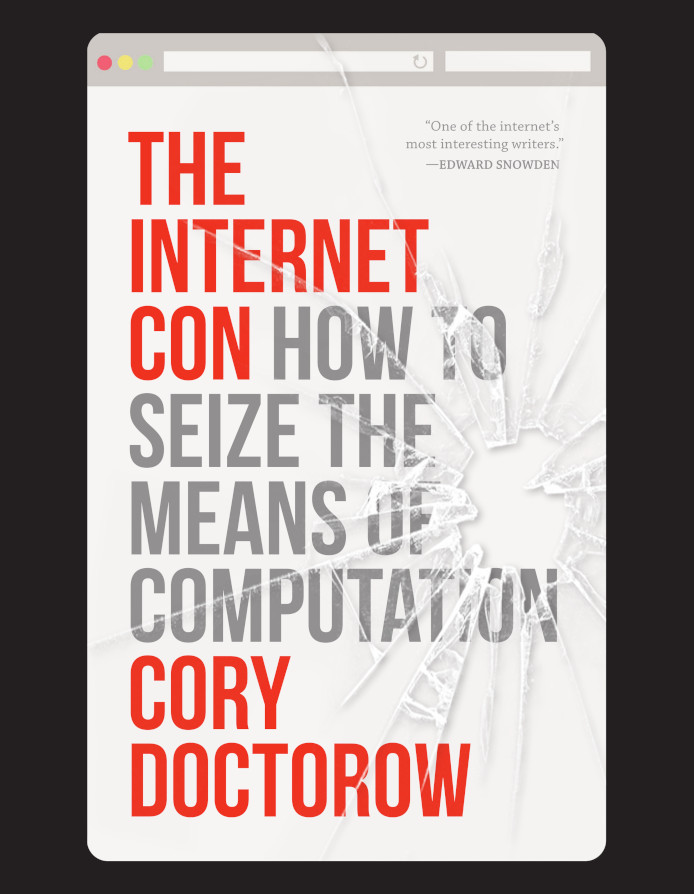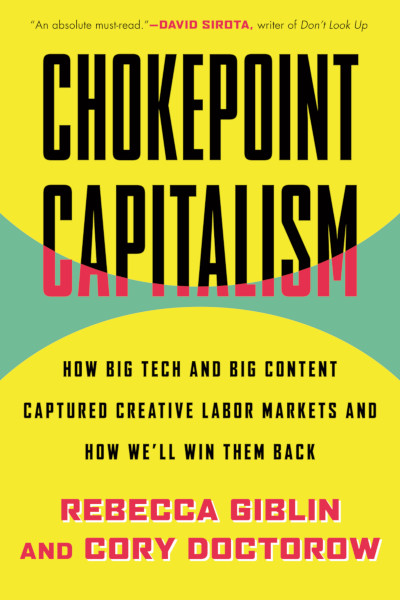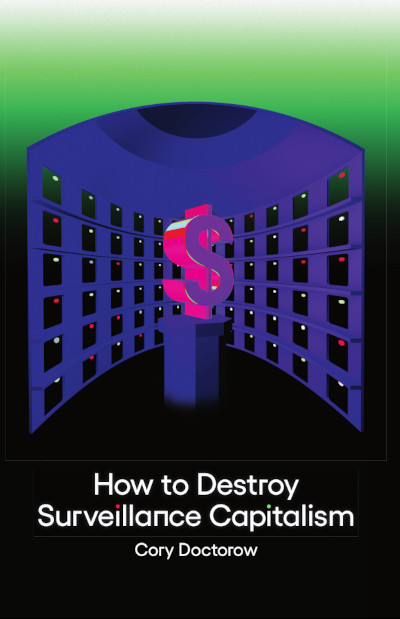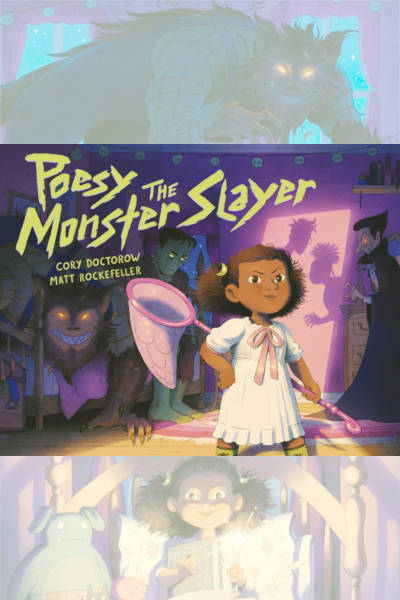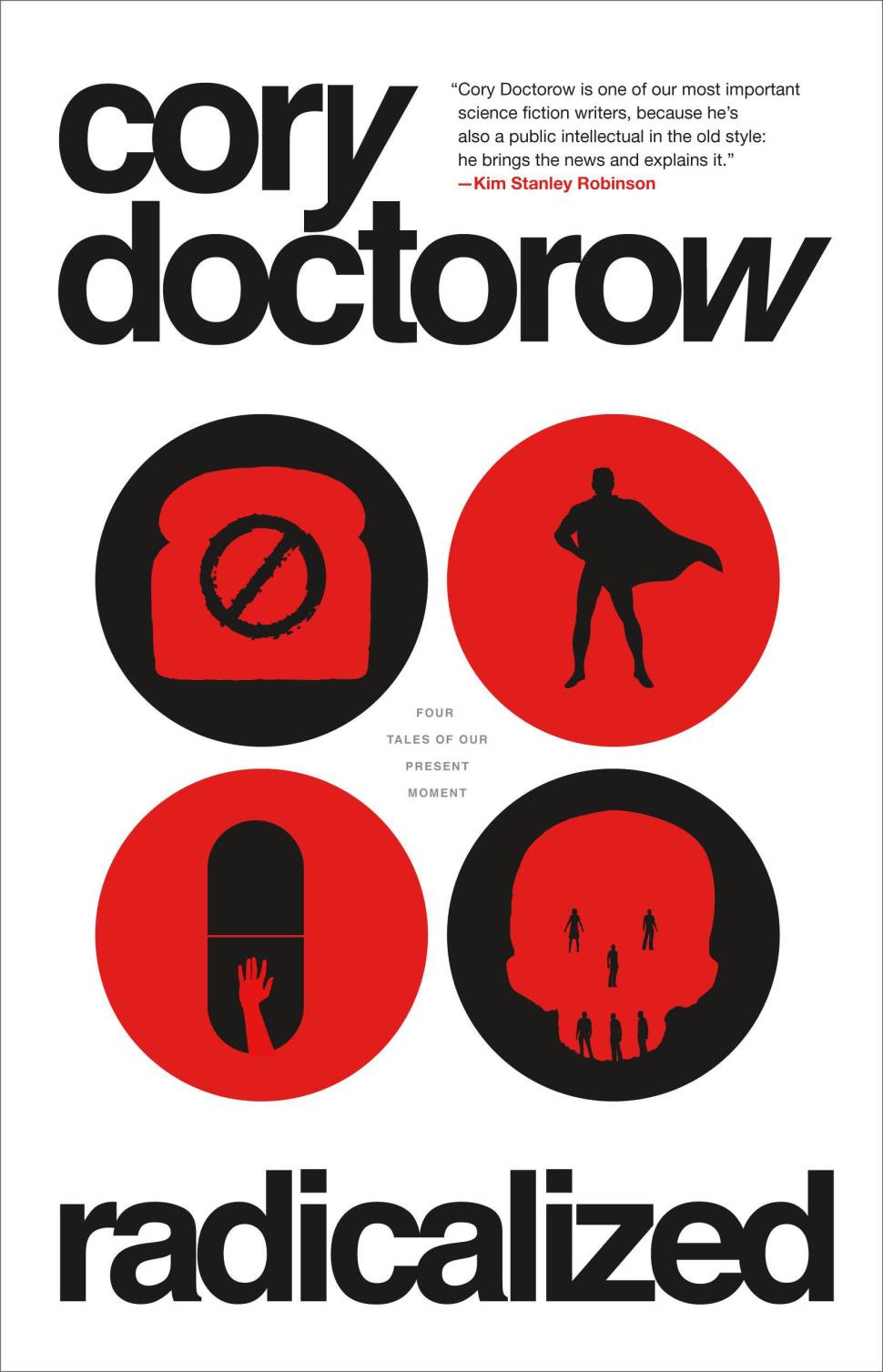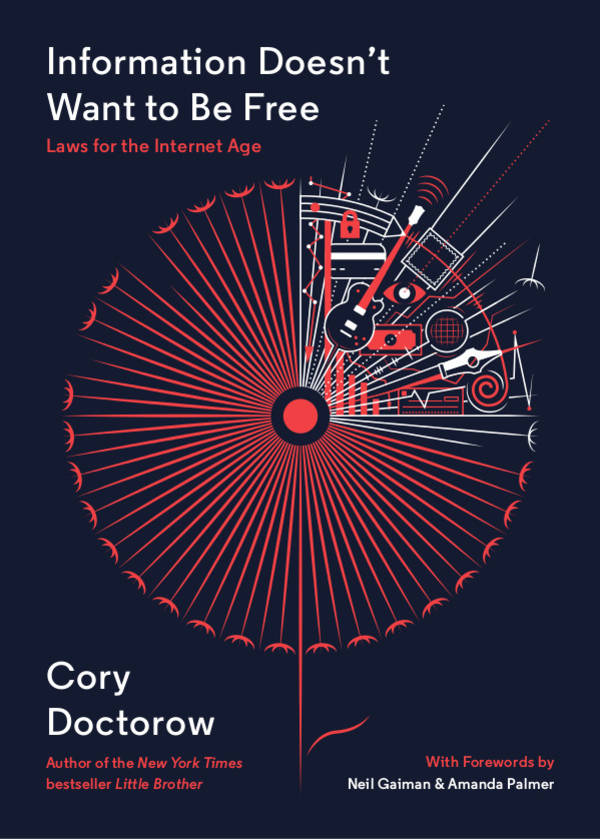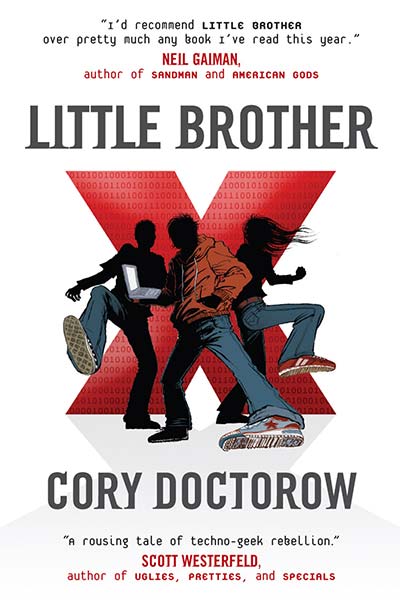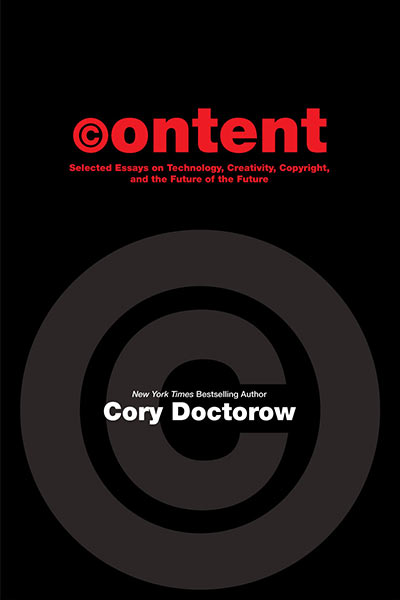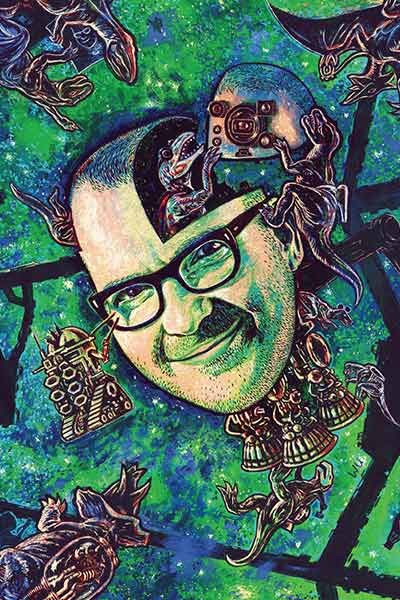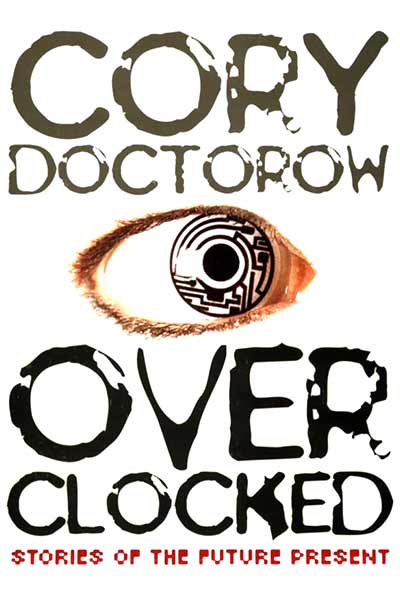I’ve got a old-fashioned link-blog, Pluralistic, where I post a daily list of links with commentary and analysis. If you’d prefer to get it as a newsletter, you can subscribe to the Plura-list. Both are free from surveillance and advertising.
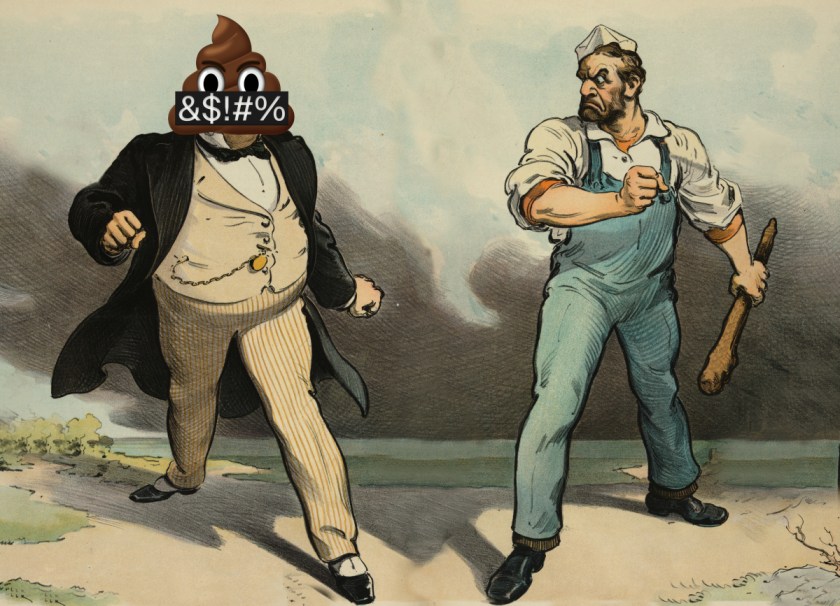
This week on my podcast, I read my latest Locus Magazine column, “Show Me the Incentive, I’ll Show You the Outcome,” about the process by which we ended up with an enshittogenic policy environment:
The whole point of the conservative project is to take away choices, and corral us into “preferences” that we disprefer. Eliminate no-fault divorce, suppress the vote, gerrymander the electoral map, cram a binding arbitration clause into every terms of service and a noncompete into every labor contract, buy up all your competitors, DRM-lock all the media, ban contraception and abortion, and you’ve got a world of partners you can’t divorce, politicians you can’t vote out, companies you can’t sue, jobs you can’t quit, services you can’t leave, books and music you can’t move, and pregnancies you can’t prevent or terminate.
And after you are relentlessly corralled into all these things you hate, you will be told that you don’t hate them after all – because you revealed your preferences for them.
Consumerism is a terrible way to make change at the best of times, and it gets less effective by the day, as authoritarianism and market consolidation shrink the world of possibilities to an endless Pepsi Challenge, where “choice” is narrowed to which flavor of sweetened battery acid you hate the least.
I don’t think that end users are to blame for enshittification.

This week on my podcast, I’ve got the audio from last week’s Enshittification book-tour event with Ed Zitron and Whitney Betran at the Seattle Public Library (you can watch the video here). I’ve got many more cities to go on the tour – I hope to see you at one (or more) of them!

This week on my podcast, I’ve got the audio from last week’s Enshittification book-tour event with former FTC Chair Lina Khan at the Brooklyn Public Library (you can watch the video here). lI’ve got 24 more cities to go on the tour – I hope to see you at one (or more) of them!
The real (economic) AI apocalypse is nigh

This week on my podcast, I read “The real (economic) AI apocalypse is nigh,” a recent column from my Pluralistic newsletter; about the looming economic crisis threatened by the AI investment bubble:
A week ago, I turned that book into a speech, which I delivered as the annual Nordlander Memorial Lecture at Cornell, where I’m an AD White Professor-at-Large. This was my first-ever speech about AI and I wasn’t sure how it would go over, but thankfully, it went great and sparked a lively Q&A. One of those questions came from a young man who said something like “So, you’re saying a third of the stock market is tied up in seven AI companies that have no way to become profitable and that this is a bubble that’s going to burst and take the whole economy with it?”
I said, “Yes, that’s right.”
He said, “OK, but what can we do about that?”
So I re-iterated the book’s thesis: that the AI bubble is driven by monopolists who’ve conquered their markets and have no more growth potential, who are desperate to convince investors that they can continue to grow by moving into some other sector, e.g. “pivot to video,” crypto, blockchain, NFTs, AI, and now “super-intelligence.” Further: the topline growth that AI companies are selling comes from replacing most workers with AI, and re-tasking the surviving workers as AI babysitters (“humans in the loop”), which won’t work. Finally: AI cannot do your job, but an AI salesman can 100% convince your boss to fire you and replace you with an AI that can’t do your job, and when the bubble bursts, the money-hemorrhaging “foundation models” will be shut off and we’ll lose the AI that can’t do your job, and you will be long gone, retrained or retired or “discouraged” and out of the labor market, and no one will do your job. AI is the asbestos we are shoveling into the walls of our society and our descendants will be digging it out for generations.
The only thing (I said) that we can do about this is to puncture the AI bubble as soon as possible, to halt this before it progresses any further and to head off the accumulation of social and economic debt. To do that, we have to take aim at the material basis for the AI bubble (creating a growth story by claiming that defective AI can do your job).
“OK,” the young man said, “but what can we do about the crash?” He was clearly very worried.
“I don’t think there’s anything we can do about that. I think it’s already locked in. I mean, maybe if we had a different government, they’d fund a jobs guarantee to pull us out of it, but I don’t think Trump’ll do that, so –”
“But what can we do?”
We went through a few rounds of this, with this poor kid just repeating the same question in different tones of voice, like an acting coach demonstrating the five stages of grieving using nothing but inflection. It was an uncomfortable moment, and there was some decidedly nervous chuckling around the room as we pondered the coming AI (economic) apocalypse, and the fate of this kid graduating with mid-six-figure debts into an economy of ashes and rubble.
(Image: TechCrunch, CC BY 2.0; Cryteria, CC BY 3.0; modified)
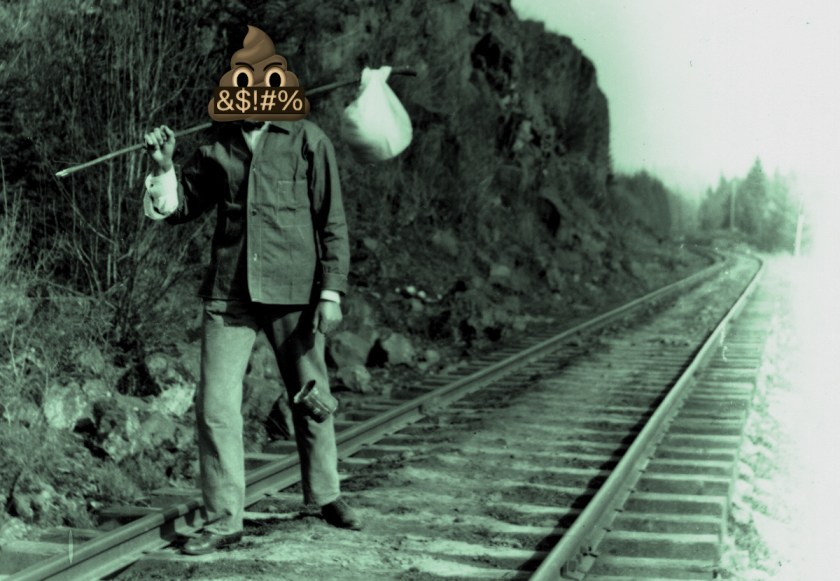
Next Monday, I’ll be departing for a 24-city, three-month book tour for my new book, Enshittification: Why Everything Suddenly Went Wrong and What To Do About It:
https://us.macmillan.com/books/9780374619329/enshittification/
This is a big tour! I’ll be doing in-person events in the US, Canada, the UK and Portugal, and a virtual event in Spain. I’m also planning an event in Hamburg, Germany for December, but that one hasn’t been confirmed yet, so it doesn’t appear in the schedule below. You’ll notice that there are events that are missing their signup and ticketing details; I’ll be keeping the master tour schedule up to date at pluralistic.net/tour.
If there’s an event you’re interested in that hasn’t had its details filled in yet, please send an email to doctorow@craphound.com with the name of the event in the subject line. I’m going to create one-shot mailing lists that I’ll update with details when they’re available (please forgive me if I fumble this – book tours are pretty intensive affairs and I’ll be squeezing this into the spare moments).
Here’s that schedule!
-
Cambridge, MA: Harvard Books presents a conversation with Randall “XKCD” Munroe at the Brattle Theater (Oct 7, 6PM)
https://www.harvard.com/event/cory-doctorow -
Washington, DC: In conversation with former CFPB chair and FTC commissioner Rohit Chopra at Politics & Prose at the Wharf (Oct 8, 7PM)
https://politics-prose.com/cory-doctorow-10825 -
Brooklyn, NY: Greenlight Bookstore presents a conversation with former FTC chair Lina Khan at the Brooklyn Public Library (Oct 9, 7PM)
https://www.bklynlibrary.org/calendar/cory-doctorow-discusses-central-library-dweck-20251009-0700pm -
New Orleans, LA: Guest of Honor at DeepSouthCon at the New Orleans Airport Hilton (Oct 10-12)
http://www.contraflowscifi.org/ -
New Orleans, LA: Enshittification at Octavia Books (Oct 12, 1PM)
https://www.octaviabooks.com/event/enshittification-cory-doctorow -
Chicago, IL: In conversation with Rick Perlstein at the University Club (Oct 14, 12PM)
https://www.eventbrite.com/e/how-platforms-die-with-cory-doctorow-tickets-1747916117159 -
Los Angeles, CA: In conversation with The American Prospect‘s David Dayen at Diesel Books (Oct 16, 6:30PM)
https://dieselbookstore.com/event/2025-10-16/cory-doctorow-enshittification -
Calgary, AB: Literary Death Match at Wordfest (Oct 17, 7:30PM)
https://wordfest.com/2025/imaginarium/show/literary-death-match/ -
Calgary, AB: Big Tech’s Betrayal—and How to Break Free! at Wordfest (Oct 18, 1PM)
https://wordfest.com/2025/imaginarium/show/big-techs-betrayaland-how-to-break-free/ -
San Francisco, CA: In conversation with Jenny Odell, author of How To Do Nothing at Public Works, presented by Booksmith (Oct 20, 7PM)
https://app.gopassage.com/events/29638 -
Portland, OR: Enshittification at Powell’s City of Books (Oct 21, 7PM)
https://www.powells.com/events/cory-doctorow-10-21-25 -
Seattle, WA: In conversation with Ed Zitron of Where’s Your Ed At at the Seattle Public Library, presented by Clarion West (Oct 22, 7PM)
https://www.spl.org/programs-and-services/authors-and-books/authors-and-books-calendar?trumbaEmbed=view%3Devent%26eventid%3D188210978 -
Vancouver, BC: In conversation with David Moscrop at the Vancouver Writers Festival (Oct 23, 530PM)
https://www.showpass.com/2025-festival-39/ -
Montreal, PQ: Keynote for the Attention Forum (Oct 24)
https://www.attentionconferences.com/conferences/2025-forum -
Montreal, PQ: Enshittification at Librarie Drawn and Quarterly (Oct 24)
https://mtl.drawnandquarterly.com/events/3757420251024 -
Ottawa, ON: Enshittification at the Ottawa Writers Festival (Oct 25, 8PM)
https://writersfestival.org/events/fall-2025/enshittification -
Toronto, ON: Enshittification with Dan Werb at Type Books in the Junction (Oct 27, 7PM)
https://www.instagram.com/p/DO81_1VDngu/?img_index=1 -
Barcelona, ES: Virtual keynote for Conferencia EUROPEA 4D (Oct 28)
https://4d.cat/es/conferencia/ -
New York City, NY: Keynote for Columbia-Hertie Digital Governance for Democratic Renewal Conference @The Forum, Columbia University (Oct 29)
https://worldprojects.columbia.edu/our-work/research-and-engagement/democratic-renewal/digital-governance -
Miami, FL: Enshittification at Books & Books (Nov 5, 7PM)
https://www.eventbrite.com/e/an-evening-with-cory-doctorow-tickets-1504647263469 -
Miami, FL: Keynote for Cloudfest (Nov 6, 9:45AM)
https://www.cloudfest.com/usa/ -
Burbank, CA: Signing at the Burbank Book Festival (Nov 8, 2PM)
https://www.burbankbookfestival.com/ -
Lisbon, PT: A post-American, enshittification-resistant internet, with Rabble at Web Summit (Nov 12, 1040AM)
https://websummit.com/sessions/lis25/92f47bc9-ca60-4997-bef3-006735b1f9c5/a-post-american-enshittification-resistant-internet/ -
Cardiff, UK: Hay Festival After Hours at Wales Millennium Centre, Bute Place (Nov 13, 7PM)
https://www.hayfestival.com/c-203-hay-festival-after-hours.aspx -
Oxford, UK: Enshittification and Extraction: The Internet Sucks Now with Tim Wu at Rawley House, Oxford Internet Institute, (Nov 14, 1730h)
https://www.oii.ox.ac.uk/news-events/events/enshittification-and-extraction-the-internet-sucks-now/ -
London, UK: Enshittification with Sarah Wynn-Williams, author of Careless People and Chris Morris (Brass Eye, Four Lions) (Nov 15, 3PM)
https://www.barbican.org.uk/whats-on/2025/event/cory-doctorow-with-sarah-wynn-williams -
London, UK: Novara Live with Aaron Bastani (Nov 17, 630PM)
https://dice.fm/partner/tickets/event/oen5rr-downstream-irl-aaron-bastani-in-conversation-with-cory-doctorow-17th-nov-earth-london-tickets -
London, UK: Enshittification with Carole Cadwalladr at the Frontline Club (Nov 18, 7PM)
https://www.eventbrite.co.uk/e/in-conversation-enshittification-tickets-1785553983029 -
Vancouver, BC: Virtual event with Vass Bednar for the Vancouver Public Library (Nov 21, 12PM)
https://www.crowdcast.io/@bclibraries-present -
San Diego, CA: Mission Hills Branch Library (Dec 1, 7PM)
https://libraryfoundationsd.org/events/doctorow -
Seattle, WA: AI Lecture for the University of Washington’s series on Neuroscience, AI and Society (Dec 4, 7PM)
https://www.eventbrite.com/e/neuroscience-ai-and-society-cory-doctorow-tickets-1735371255139 -
Madison, CT: Enshittification at RJ Julia (Dec 8, 630PM)
https://rjjulia.com/event/2025-12-08/cory-doctorow-enshittification -
Hamburg, DE: Chaos Communications Congress (Dec 27-30)
https://events.ccc.de/congress/2025/infos/index.html -
Denver, CO: Enshittification at The Tattered Cover (Jan 22, evening)
Details and ticket link to come

This week on my podcast, I read “By all means, tread on those people,” a recent column from my Pluralistic newsletter; about the way that the American descent in fascism is connected to its abandonment of the rule of law more broadly:
Just as Martin Niemöller’s “First They Came” has become our framework for understanding the rise of fascism in Nazi Germany, so, too is Wilhoit’s Law the best way to understand America’s decline into fascism:
In case you’re not familiar with Frank Wilhoit’s amazing law, here it is:
Conservatism consists of exactly one proposition, to wit: There must be in-groups whom the law protects but does not bind, alongside out-groups whom the law binds but does not protect.
The thing that makes Wilhoit’s Law so apt to this moment – and to our understanding of the recent history that produced this moment – is how it connects the petty with the terrifying, the trivial with the radical, the micro with the macro. It’s a way to join the dots between fascists’ business dealings, their interpersonal relationships, and their political views. It describes a continuum that ranges from minor commercial grifts to martial law, and shows how tolerance for the former creates the conditions for the latter.

It’s the 500th edition of my podcast, and to celebrate, I’m bringing you an hour-long excerpt from the audiobook of my forthcoming book Enshittification: Why Everything Suddenly Got Worse and What To Do About It (Farrar, Straus and Giroux US/Canada; Verso UK/Commonwealth).
Because Amazon won’t carry my audiobooks (or any DRM-free audiobooks), I have to produce my own books and pre-sell them on Kickstarter campaigns. The Kickstarter for this one is underway and going great.
I hope that listening to this long sample will convince you to pre-order your copy! I don’t ask for Patreon donations, I don’t put ads on my work – these Kickstarters are a big part of why I’m able to pursue my open access, enshittification-free publishing program, and I really thank you for your support.
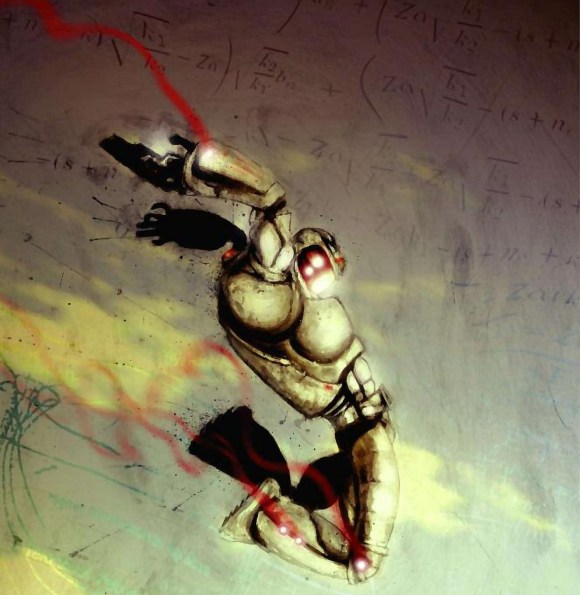
This week on my podcast, I conclude my reading of my 2003 Asimov’s Science Fiction Magazine story, Nimby and the D-Hoppers” (here’s the first half). The story has been widely reprinted (it was first published online in The Infinite Matrix in 2008), and was translated (by Elisabeth Vonarburg) into French for Solaris Magazine, as well as into Chinese, Russian, Hebrew, and Italian. The story was adapted for my IDW comic book series Cory Doctorow’s Futuristic Tales of the Here and Now by Ben Templesmith. I read this into my podcast 20 years ago, but I found myself wanting to revisit it.
Don’t get me wrong — I like unspoiled wilderness. I like my sky clear and blue and my city free of the thunder of cars and jackhammers. I’m no technocrat. But goddamit, who wouldn’t want a fully automatic, laser-guided, armor-piercing, self-replenishing personal sidearm?
Nice turn of phrase, huh? I finally memorized it one night, from one of the hoppers, as he stood in my bedroom, pointing his hand-cannon at another hopper, enumerating its many charms: “This is a laser-guided blah blah blah. Throw down your arms and lace your fingers behind your head, blah blah blah.” I’d heard the same dialog nearly every day that month, whenever the dimension-hoppers catapaulted into my home, shot it up, smashed my window, dived into the street, and chased one another through my poor little shtetl, wreaking havoc, maiming bystanders, and then gateing out to another poor dimension to carry on there.
Assholes.
It was all I could do to keep my house well-fed on sand to replace the windows. Much more hopper invasion and I was going to have to extrude its legs and babayaga to the beach. Why the hell was it always my house, anyway?

This week on my podcast, I once again read my 2003 Asimov’s Science Fiction Magazine story, Nimby and the D-Hoppers” The story has been widely reprinted (it was first published online in The Infinite Matrix in 2008), and was translated (by Elisabeth Vonarburg) into French for Solaris Magazine, as well as into Chinese, Russian, Hebrew, and Italian. The story was adapted for my IDW comic book series Cory Doctorow’s Futuristic Tales of the Here and Now by Ben Templesmith. I read this into my podcast 20 years ago, but I found myself wanting to revisit it.
Don’t get me wrong — I like unspoiled wilderness. I like my sky clear and blue and my city free of the thunder of cars and jackhammers. I’m no technocrat. But goddamit, who wouldn’t want a fully automatic, laser-guided, armor-piercing, self-replenishing personal sidearm?
Nice turn of phrase, huh? I finally memorized it one night, from one of the hoppers, as he stood in my bedroom, pointing his hand-cannon at another hopper, enumerating its many charms: “This is a laser-guided blah blah blah. Throw down your arms and lace your fingers behind your head, blah blah blah.” I’d heard the same dialog nearly every day that month, whenever the dimension-hoppers catapaulted into my home, shot it up, smashed my window, dived into the street, and chased one another through my poor little shtetl, wreaking havoc, maiming bystanders, and then gateing out to another poor dimension to carry on there.
Assholes.
It was all I could do to keep my house well-fed on sand to replace the windows. Much more hopper invasion and I was going to have to extrude its legs and babayaga to the beach. Why the hell was it always my house, anyway?
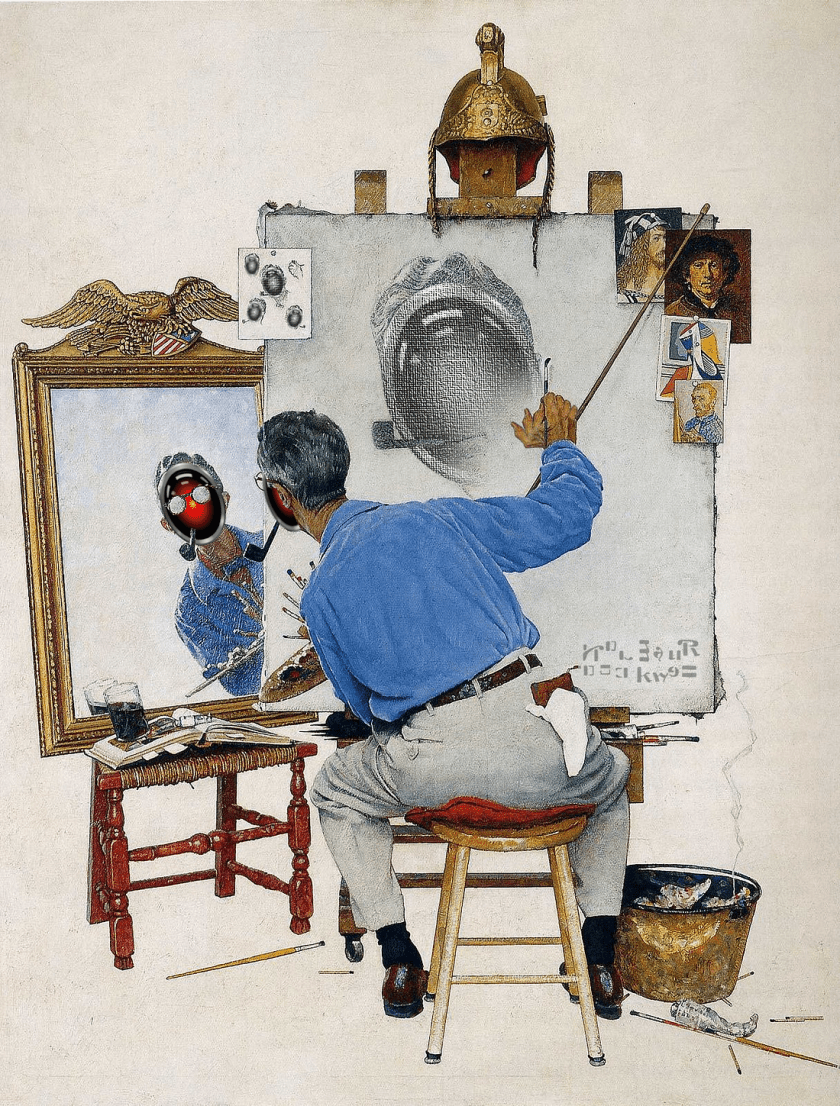
This week on my podcast, I read Why I don’t like AI art, a column from last week’s Pluralistic newsletter:
Which brings me to art. As a working artist in his third decade of professional life, I’ve concluded that the point of art is to take a big, numinous, irreducible feeling that fills the artist’s mind, and attempt to infuse that feeling into some artistic vessel – a book, a painting, a song, a dance, a sculpture, etc – in the hopes that this work will cause a loose facsimile of that numinous, irreducible feeling to manifest in someone else’s mind.
Art, in other words, is an act of communication – and there you have the problem with AI art. As a writer, when I write a novel, I make tens – if not hundreds – of thousands of tiny decisions that are in service to this business of causing my big, irreducible, numinous feeling to materialize in your mind. Most of those decisions aren’t even conscious, but they are definitely decisions, and I don’t make them solely on the basis of probabilistic autocomplete. One of my novels may be good and it may be bad, but one thing is definitely is is rich in communicative intent. Every one of those microdecisions is an expression of artistic intent.




